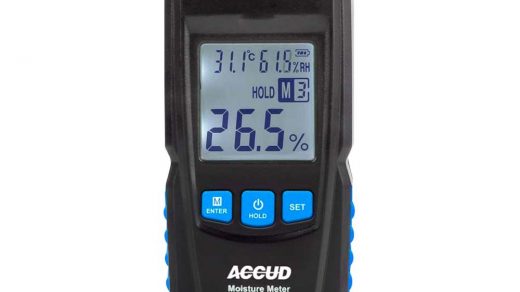There are countless different types of manufacturing systems, techniques and microprocesses which vary widely depending on the product and its scale of production. However, manufacturing at its core has been segmented by the industry into a few broad categories, based on established production processes. Before we get into the processes themselves, let’s get a proper understanding of what the term ‘manufacturing process’ means exactly.
Manufacturing Process: A Simple Definition
A manufacturing process can simply be defined as a set of disciplines followed throughout the production stages. These disciplines or rules guide the general steps and methods which are to be followed for manufacturing the concerned product, but the machinery, manual labor, automation, digital technology, time period, work volume, etc. will vary in accordance with the product.
Although there only a handful of core manufacturing processes, companies usually customize the variables sufficiently to turn them into something that is precisely suited to their needs. As to what the core manufacturing processes are, that’s what we will be discussing next.
Repetitive Manufacturing Process
The original idea behind the repetitive process is to find the best possible production and assembly line setup, and then stick to it to the letter. Most large-scale manufacturing processes are repetitive in nature, because this allows for stability, consistency, and control over the rate of production. Since the manufacturer has already found the best possible manufacturing parameters for their production line before going into mass manufacturing, each and every product that comes from those preset lines is going to be of the same exact quality.
Ever since the industrial revolution and especially after the digital revolution, the repetitive process has made it possible for companies to consistently meet customer expectations and match market demands by adjusting the rate or speed of these production and assembly lines. For example, the pace of repetitive assembly lines in a vehicle manufacturing plant would be slowed down during the off seasons, but they will also be sped up to meet market demands just before the big orders start coming in. This control which a customized repetitive manufacturing process provides over the production rate and quality is a must-have benefit for any modern enterprise-grade large scale manufacturer.
Job Shop Manufacturing Process
The job shop manufacturing process is used by small scale manufacturers for the most part, but they are also used by the big manufacturing companies at times for producing special order custom parts, or to create limited-edition products. It’s more old-school as little to no automation is present in job shops, and the work is completed by skilled workers instead.
The idea behind a job shop area manufacturing process is to produce uniquely custom, high-quality products in limited quantities. Whether it’s limited edition, handmade pottery, or a machine shop engaged in producing custom parts for aircrafts, boats and farming machines. Note that assembly lines are often still used to complete the products, as the job shop workers may only work on specific parts of the product.
Discrete Manufacturing Process
Production and assembly lines that can offer more discretion, flexibility, diversity, and customizability are used in discrete manufacturing processes. Other than the machines and the software, there is also the element of increased human control and supervision involved in discrete manufacturing processes.
The manufacturing process is used to create only high-value products which can justify the extra cost accompanying it. For example, a reputed smartphone manufacturer will use variations of the continuous, repetitive manufacturing process to create all its low-mid range smartphones, but their flagship range will always be produced via the discrete manufacturing process. In short, it’s a large-scale manufacturing process for high value products that requires top level quality control.
Batch Manufacturing Process
It is quite difficult to distinguish between the batch manufacturing process and the discrete manufacturing process because the former is a part of the latter, rather than being a completely separate process altogether. In fact, consider any of the manufacturing processes mentioned so far, including the job shop process, and the add the concept of manufacturing in batches to it. It is essentially what most manufacturers incorporate into their manufacturing processes to complete separate orders from separate clients, reduce constant load, maintain quality, and decrease chances of overproduction.
Continuous Manufacturing Process
Almost the same as the repetitive manufacturing process we have already discussed, there is only one aspect that separates the continuous process from the repetitive process in manufacturing. Within the industry, continuous manufacturing process is a term assigned exclusively to the production methods used for creating liquid, semi-solid, and granular products such as oil, powders and chemicals. Other than that, repetitive manufacturing and continuous manufacturing has almost nothing in general to separate the two from each other.
Lean Manufacturing Process
The lean manufacturing process is the most important discipline in all of manufacturing today, because it applies to all types of manufacturing. Although it started with two major vehicle manufacturers, namely Ford and Toyota, there is practically no field of manufacturing today that cannot benefit from lean.
This is not something that can be learned or applied properly without the right education and training, which is why the Online Masters in Lean Manufacturing at Kettering Global was developed in collaboration with General Motors. Nevertheless, an introduction to the idea is possible, if you go through the following four primary principals of lean manufacturing:
- Identification and establishment of the product’s value
- Identification of all steps in the manufacturing process
- Elimination of all unnecessary steps from the process
- Creation of workflow with tight sequencing of every step, which is achieved by reducing the gap between each step
Some consider 3D printing to be a separate manufacturing process, but it is difficult to agree with that idea. Yes, it is a newer and, in some instances, a better way of manufacturing a wide range of products for sure, but 3D printers are still subject to the same manufacturing principals and processes that we have already discussed. They are revolutionary tools for sure, but the 3D printer is in no way a separate manufacturing process like CNC machining.




Recent Comments